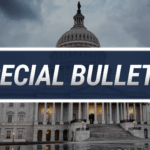
Analyzing Actionable Examples for Catheter-Directed Thrombolysis Success in 2025
Upper extremity coding is a sea of complexity that can easily sink coding accuracy if you are not prepared. Thrombolysis, in particular, poses a high

Since its creation in 1965, Medicaid has served as a lifeline for low-income individuals, families, and the disabled, offering health coverage in partnership with state governments.
Over time, states have sought greater flexibility in administering their Medicaid programs, leading to the development of Medicaid waivers. Among the most influential outcomes of these waivers in recent decades has been the rise of directed payments to hospitals: financial tools designed to stabilize hospital finances, support access to care, and promote value-based purchasing.
The Medicaid program was initially structured with a rigid set of federal requirements. However, as states faced diverse and evolving healthcare needs, Congress authorized waiver authority to permit experimentation outside the traditional federal framework. The most relevant exceptions to hospital payments are:
The use of 1115 waivers gained momentum in the 1990s and 2000s, with states designing delivery system reforms and seeking to stabilize safety-net hospitals through supplemental payments.
The introduction of Medicaid Managed Care Organizations (MCOs) created complications for financing hospital services. In traditional fee-for-service (FFS) Medicaid, states could directly pay hospitals supplemental funds through programs like Disproportionate Share Hospital (DSH) payments and Upper Payment Limits (UPLs). But under managed care, the state paid capitation to the MCOs, and those entities – not the state – paid the providers.
To address this issue, the Centers for Medicare & Medicaid Services (CMS) established a regulatory framework in 2016 for state-directed payments (SDPs) under 42 CFR §438.6(c). These allowed states to direct how MCOs pay certain providers, as long as they met Centers for Medicare & Medicaid Services (CMS) rules regarding actuarial soundness, transparency, and network adequacy.
Directed payments help states advance payment reform goals, support financially distressed hospitals, and address access challenges in underserved areas.
They must be:
Examples include increased payments to public hospitals, minimum fee schedules for essential services, and incentive-based payments tied to quality benchmarks.
States often fund these payments with non-federal share sources, such as provider taxes, Intergovernmental Transfers (IGTs), and Certified Public Expenditures (CPEs). This financial interdependence between providers and the Medicaid program adds complexity and scrutiny.
As I have written about previously, SDP payments have continued to skyrocket. The Government Accountability Office (GAO) raised concerns over:
CMS has since increased its review of directed payment proposals, requiring more rigorous justification and validation of methodologies.
As healthcare systems shift toward value-based care, directed payments are likely to continue evolving. States will need to demonstrate clear connections between payment strategies and improved outcomes. Moreover, CMS may impose tighter guardrails to prevent abuse and ensure transparency.
The impending expiration of some 1115 waivers (e.g., Florida’s waiver in 2030) also prompts states to reevaluate how they use LIP funding, supplemental payments, and SDPs within broader Medicaid reforms.

Upper extremity coding is a sea of complexity that can easily sink coding accuracy if you are not prepared. Thrombolysis, in particular, poses a high

When it comes to radiation oncology coding, the clinical treatment planning process isn’t just technical—it’s critical, with complex nuances that may spell trouble for coders
Please log in to your account to comment on this article.
Subscribe to receive our News, Insights, and Compliance Question of the Week articles delivered right to your inbox.




Happy National Doctor’s Day! Learn how to get a complimentary webcast on ‘Decoding Social Admissions’ as a token of our heartfelt appreciation! Click here to learn more →
Unlock 50% off all 2024 edition books when you order by July 5! Use the coupon code CO5024 at checkout to claim this offer!
CYBER WEEK IS HERE! Don’t miss your chance to get 20% off now until Dec. 2 with code CYBER24